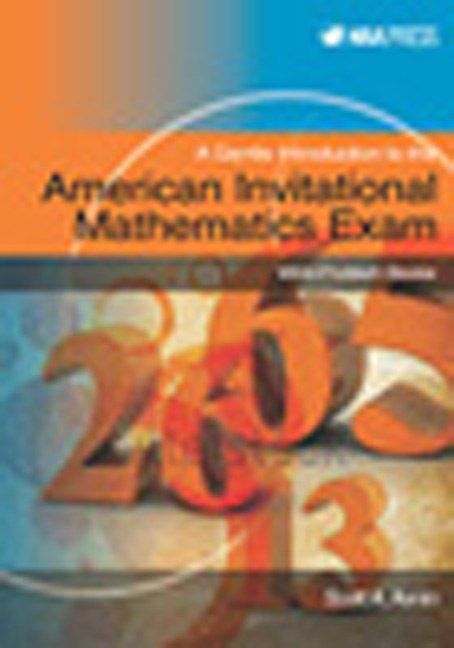Book contents
- Frontmatter
- Contents
- Preface
- List of Abbreviations and Symbols
- 1 Algebraic Equations
- 2 Combinatorics
- 3 Probability
- 4 Number Theory
- 5 Sequences and Series
- 6 Logarithmic and Trigonometric Functions
- 7 Complex Numbers and Polynomials
- 8 Plane Geometry
- 9 Spatial Geometry
- 10 Hints for the Exercises
- 11 Solutions to Exercise Sets
- Answers to All Exercises
- About the Author
- Index
1 - Algebraic Equations
- Frontmatter
- Contents
- Preface
- List of Abbreviations and Symbols
- 1 Algebraic Equations
- 2 Combinatorics
- 3 Probability
- 4 Number Theory
- 5 Sequences and Series
- 6 Logarithmic and Trigonometric Functions
- 7 Complex Numbers and Polynomials
- 8 Plane Geometry
- 9 Spatial Geometry
- 10 Hints for the Exercises
- 11 Solutions to Exercise Sets
- Answers to All Exercises
- About the Author
- Index
Summary
Your problem may be modest; but if it challenges your curiosity and brings into play your inventive faculties, and if you solve it by your own means, you may experience the tension and enjoy the triumph of discovery. Such experiences at a susceptible age may create a taste for mental work and leave their impact on mind and character for a lifetime.
—George Pólya, How to Solve ItIntroduction
Mathematics is a language. It consists of symbols and notation that must be established and agreed upon before meaningful communication can occur. If mathematics is to be useful in addressing real-world problems, it must be able to transcend the language we speak in. That is, the problems we wish to solve must be interpreted, translated into mathematical language, and solutions converted back into the language we speak in. Many problems in the AIME competition require precisely these steps to be carried out.
One of the main components of the language of mathematics is the equation. An equation is an entity that involves numbers, variables, and relationships among them. Equations commonly arise in every branch of mathematics, including all the subjects covered in this book: number theory, geometry, algebra, trigonometry, polynomials, and so on. Therefore, before we examine AIME problems that involve these topics, it will be helpful to have a chapter devoted first and foremost to the study and solution of algebraic equations, without dealing with any deeper mathematical notions underlying the problems. At the same time, this will give us an opportunity to practice the language of mathematics; that is, we will practice converting problems into equations, solving them, and then converting the solutions back into usable real-world information.
Here is a good example to illustrate the above strategy. (Recall from the Preface that the notation AIME-2 refers to a problem found in version 2 of a year's AIME competition.)
Example 1.1.1. (2009 AIME-2, Problem #1) Before starting to paint, Bill had 130 ounces of blue paint, 164 ounces of red paint, and 188 ounces of white paint. Bill painted four equally sized stripes on the wall, making a blue stripe, a red stripe, a white stripe, and a pink stripe. Pink is a mixture of red and white, not necessarily in equal amounts.
- Type
- Chapter
- Information
- Publisher: Mathematical Association of AmericaPrint publication year: 2016



